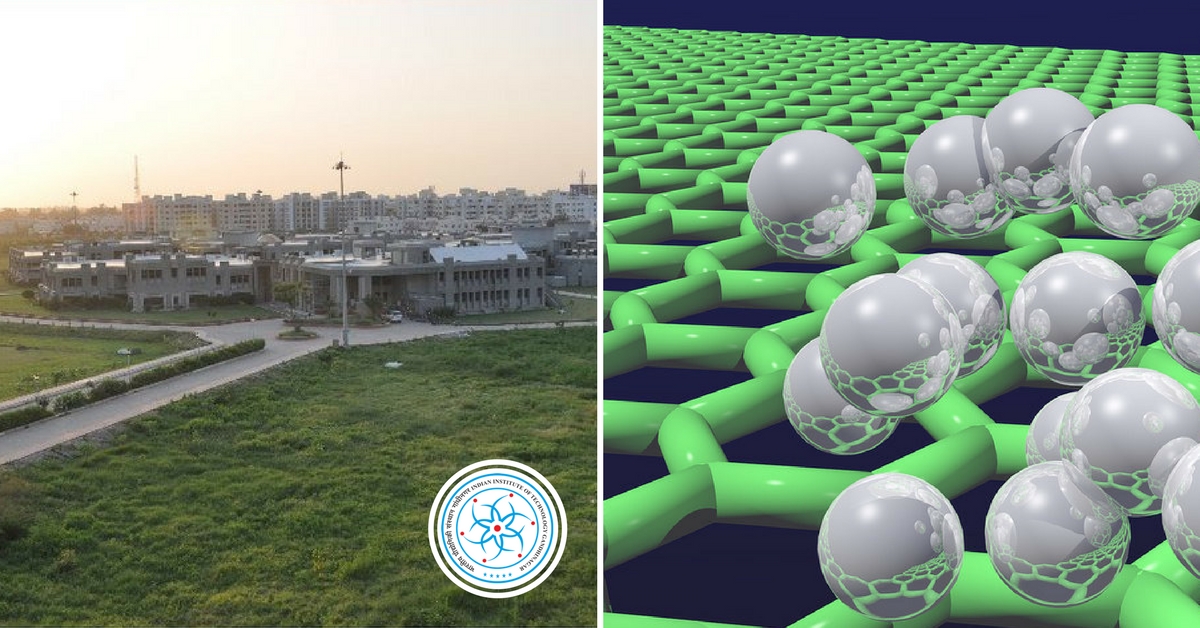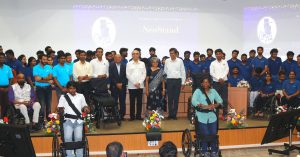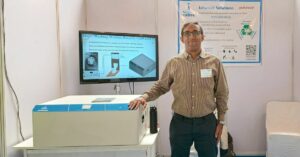New Class Of Ultra-thin Nanomaterial Found By IIT Gandhinagar Scientists
Newer nanomaterials are being engineered to suit the practicalities of our technologically advanced life.

The thinner a material gets, our intuition signals that the material will be weaker and easily breakable. But your intuition will be proved wrong if you come across graphene.
Graphene is the world’s first ‘thinnest and strongest’ material, extracted from graphite– a crystalline allotrope of carbon, in 2004. Graphite is a common form of carbon, commonly used in pencils. So when you draw with a pencil, you’re laying down thin layers of graphite. If you were to peel these away, layer by layer, you’d end up with a layer just thick as one atom – that’s 0.34 nanometer. And that’s graphene.
Graphene revolutionised the field of nanomaterial and opened up immense possibilities to redesign existing technologies with its unique properties like its strength, which is 200 times stronger than steel and its superb electrical and thermal conductivity.
With that, newer nanomaterials are being engineered to suit the practicalities of our technologically advanced life.

And methods to create nanomaterials are also crucial if we ever want to incorporate its abilities in our day-to-day life.
And recently, the researchers at Indian Institute of Technology, Gandhinagar synthesised nanosheets by delaminating Magnesium diboride, a compound that has been primarily known for its superconducting properties.
These ultra-thin nanosheets can find a range of applications from next-generation batteries to ultraviolet absorbing films.
Boron has been a prime field of study for nanotechnology researchers because of its numerous unique properties like its low density, high mechanical strength, lighter weight, high thermal resistance, high melting point, ability to absorb neutrons, and high resistance to chemical attacks.
The nanosheets developed by researchers are made of boron atoms arranged in the shape of a honeycomb, using a simple method.
“We prepared boron-rich nanosheets by an extremely simple method, which merely involves dissolving a boride compound in water and letting it recrystallise for just the right duration of time,” explained Dr Kabeer Jasuja of Department of Chemical Engineering, IIT Gandhinagar, while speaking to India Science Wire.
This simple method of production may yield a higher number of ultra-thin nanosheets – which is a necessary link for helping utilise these nanosheets in a realistic application.
These sheets have a range of uses. For example, the ability of these boron-based nanostructures to only absorb UV radiation makes them ideal candidates for developing transparent UV absorbing films. And the presence of boron makes these nanostructures promising candidates for engineering hydrogen storage materials.
“The rich chemistry of boron is expected to make these nanosheets useful for not only storing energy but also for generating energy in a green manner. We are now working towards utilising these nanosheets for developing the next generation batteries and nanocatalysts” added Jasuja.
The study was funded under the Fast Track Research Grant for Young Scientists of given by Science and Engineering Research Board (SERB), the INSPIRE Faculty Award Research Grant by Department of Science and Technology, and the seed funding from IIT Gandhinagar.
With this ground-breaking discovery, new possible inventions can be conjured which can contribute to the betterment of not our lives, but of the environment as well.
Hey, you may also like: This Innovation Is Allowing The Chennai Metro Rail To Generate Its Own Power!
Like this story? Or have something to share?
Write to us: [email protected]
Connect with us on Facebook and Twitter.
NEW: Click here to get positive news on WhatsApp!
This story made me
- 97
- 121
- 89
- 167
Tell Us More
We bring stories straight from the heart of India, to inspire millions and create a wave of impact. Our positive movement is growing bigger everyday, and we would love for you to join it.
Please contribute whatever you can, every little penny helps our team in bringing you more stories that support dreams and spread hope.



















